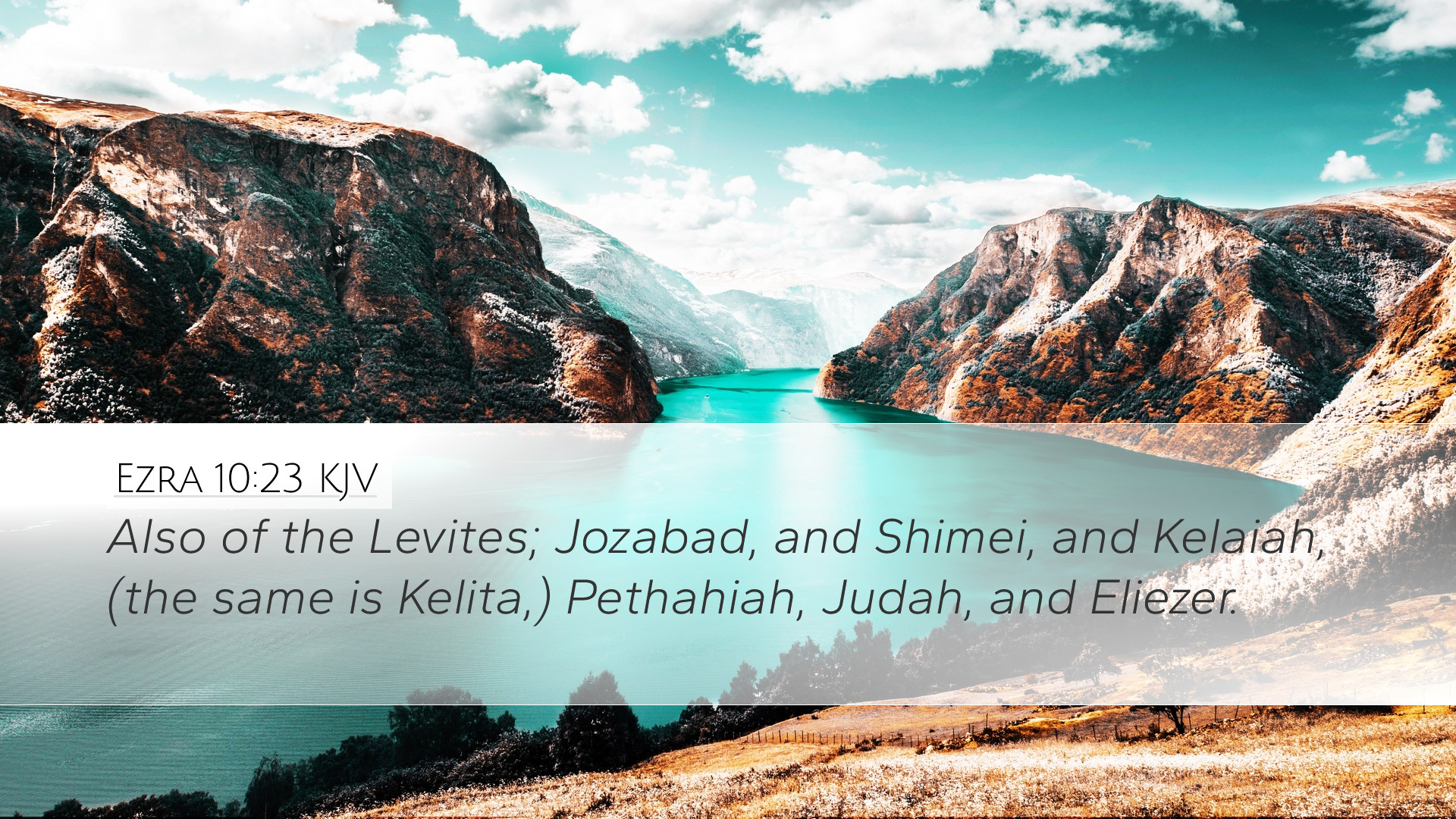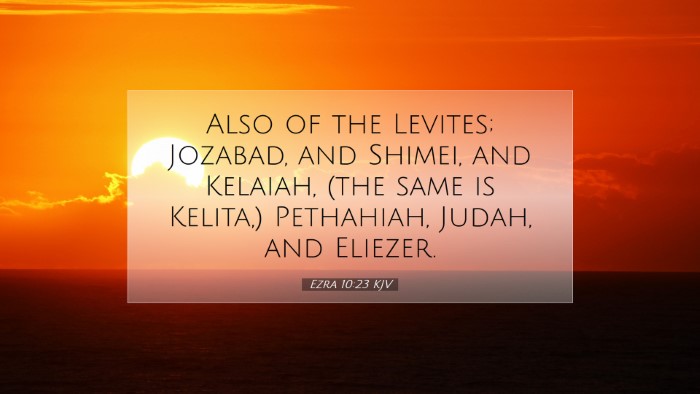Commentary on Ezra 10:23
Ezra 10:23 reads: “And of the sons of Shechaniah; the son of Jehiel; the sons of Elam; and the sons of Zattu; and of the children of Phinehas; and of the children of the Levites; the children of the singers; the children of the gatekeepers; and the children of the Nethinims; there were many in those days.”
Spiritual Context of Ezra 10
The book of Ezra describes the return of the Jewish exiles from Babylon to Jerusalem under the leadership of Ezra. Ezra 10 captures a pivotal moment in the restoration of the Jewish identity and religious life post-exile. The chapter documents a solemn gathering where Ezra, upon hearing of the intermarriage of the Israelites with surrounding nations, leads the people in a moment of reflection and repentance.
Matthew Henry's Insights
Matthew Henry emphasizes the significance of Ezra's leadership in addressing the issue of foreign marriages, reflecting on the dangers of such unions leading to spiritual compromise. He states, “Ezra's distress at the people's sin was appropriate for a leader who understood the gravity of their covenant with God.” Henry highlights that the list of names, including those mentioned in Ezra 10:23, serves not only to demonstrate the involvement of specific families but also underscores the collective responsibility of the community in maintaining holiness.
Albert Barnes' Reflections
Albert Barnes offers a thorough examination of the families mentioned in this verse. He points out that the mention of the sons of Shechaniah and others reflects a broader array of societal roles within Israel. Barnes appreciates the inclusion of “sons of Elam” and “sons of Zattu,” indicating the diverse backgrounds of the returned exiles. He notes that these groups exemplified varying aspects of Jewish societal structure, including priests, Levites, singers, and gatekeepers, suggesting a comprehensive response to Ezra’s call for reforms.
Adam Clarke's Commentary
Adam Clarke provides a detailed analysis of the cultural implications of the intermarriages. He states that the reconnecting of families and societal classes reveals an underlying principle of community restoration—“the children of Phinehas” referenced denotes a point of purity, harking back to the zeal of Phinehas, who was commended for his fervor in righteousness. Clarke argues this notion serves as a model for contemporary believers concerning zeal for God’s covenant.
Theological Themes
- Covenant Identity: The emphasis on family and lineage signals the importance of cultural and religious identity in a recovering community.
- Repentance and Restoration: Ezra exemplifies the call to repent and restore faithfulness to God’s commandments as a community effort.
- Holiness and Separation: The narrative touches upon the need for holy living and the perils of alliances that dilute one's commitment to God.
Contemporary Application
This passage invites scholars, pastors, and students to engage with the implications of maintaining a distinct faith identity in a pluralistic society. As in Ezra's time, the challenge remains for modern believers to ensure their relationships and alliances do not compromise their spiritual commitments. It also serves as a reminder of the importance of community in addressing sin—calling for a collective effort toward repentance and renewal.
Practical Steps for Modern Believers
- Community Engagement: Encourage open dialogues within local congregations regarding contemporary issues of faith and relationships.
- Education: Emphasize the need for robust biblical teaching that helps individuals understand the importance of covenant faithfulness in today's context.
- Cultivating Zeal: Just as Phinehas showed zeal for God’s holiness, encourage believers to be zealous for the purity of the church and their individual lives.
Conclusion
Ezra 10:23 encapsulates a vital historical moment fused with rich theological implications, presenting a model for community restoration and individual conviction. The insights gathered from these classic commentators help illuminate the eternal truths contained within this verse, presenting it as a relevant and challenging word for the church today.


